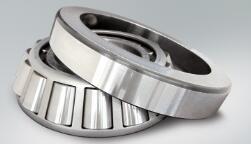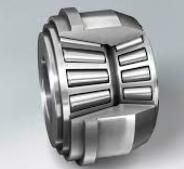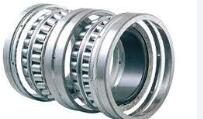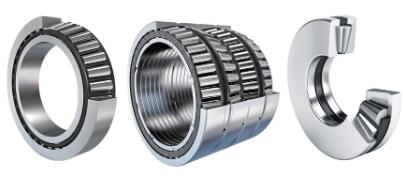The Ultimate Guide for tapered roller bearings in 2023
The Ultimate Guide for tapered roller bearings in 2023: Get the latest knowledge and insights on new designs, materials, technologies, and more.
Find out what’s new and what’s working with the leading experts in the industry.
As technology advances, so does the need for reliable and efficient tapered roller bearings.
This article provides a comprehensive and up-to-date look at the current state of the industry and offers invaluable advice on how to choose the best bearings for your needs.
Tapered roller bearings are essential for many industries in 2023, as they provide precise and reliable motion control.
These bearings are designed to handle radial and axial loads, as well as shock loads.
With proper maintenance, tapered roller bearings can provide years of reliable performance.
This ultimate guide dives deep into the maintenance and repair of tapered roller bearings, including best practices, the latest trends, and how to get the most out of them.
Get ready to master tapered roller bearings in 2023!
Introduction tapered roller bearings
Tapered roller bearings are an important type of bearing used in many different industries and applications.
They are designed to handle both radial and thrust loads and provide a great deal of stability.
They are typically used in high-speed applications, such as in automobiles and agricultural machinery.
Tapered roller bearings are made up of several components, including inner and outer races, rollers, and a cage.
These components work together to provide a smooth and reliable motion with minimal friction.
Tapered roller bearings are also known for their long service life and low maintenance requirements.
Types of Tapered Roller Bearings
1.Single-row tapered roller bearings:

Single-row tapered roller bearings are roller bearings that have tapered conical rollers and a single row of them.
These bearings are used to transmit torque and radial forces in applications such as automobiles, machinery, and gearboxes.
They are designed to support radial loads and axial loads in one direction.
The bearing's inner and outer rings have a row of tapered rollers that are aligned with one another and fit into corresponding grooves.
This design helps to reduce friction and increase load capacity.
The angle of the tapered rollers is designed to maximize the contact area between the bearing and its mating components, thereby increasing load capacity and efficiency.
Single-row tapered roller bearings are available in a variety of sizes and styles, including open bearings, sealed bearings, and double-row tapered roller bearings.
Depending on the application, single-row tapered roller bearings can be used in combination with other bearings, such as deep groove ball bearings, spherical roller bearings, and needle roller bearings.
2.Double-row tapered roller bearings:

Double-row tapered roller bearings are a type of bearing that contain both an inner and outer row of tapered rollers and are typically used in applications that require supporting a heavy axial load and radial load.
These bearings are designed to reduce friction and provide support in applications such as automotive transmissions, agricultural equipment, industrial transmissions, and even in aerospace applications.
The inner and outer rows of tapered rollers are designed to provide a strong and reliable support structure for heavy axial and radial loads.
The tapered rollers are designed to provide a smooth rolling action that reduces friction and helps to increase the longevity of the bearing.
The design of the double-row tapered roller bearing ensures that it maintains its structural integrity even when subjected to high loads and vibrations.
The design of double-row tapered roller bearings also allows for easy installation and maintenance, as well as providing a more cost-effective solution when compared to other types of bearings.
The double-row tapered roller bearing can also be used in applications such as automotive transmissions, agricultural equipment, industrial transmissions, and even in aerospace applications.
3.Four-row tapered roller bearings:

Four-row tapered roller bearings are cylindrical roller bearings used in a variety of applications, most commonly in heavy-duty industrial equipment.
These bearings are designed to handle both radial and axial loads, and their four-row design increases their capacity to handle both loads.
In applications where the bearing must withstand both radial and thrust loads, tapered roller bearings are frequently employed.
They are particularly helpful when loads are delivered at an angle to the bearing's axis.
Four-row tapered roller bearings are constructed of two inner rows of tapered rollers, two outer rows of tapered rollers, and two sets of cages that contain and guide the rollers.
The rollers are tapered to allow them to roll along a conical path, which helps to reduce friction.
The two inner rows of tapered rollers have tapered surfaces that contact the inner raceway, and the outer rows of tapered rollers have tapered surfaces that contact the outer raceway.
The cages are designed to contain and guide the rollers, and they also help to dissipate heat generated during operation.
Components of a Tapered Roller Bearing
Inner ring:
The inner ring of a tapered roller bearing is the cylindrical component of the bearing, which houses the rollers and other components.
It acts as a support structure for the tapered roller bearings and allows them to rotate freely.
The inner ring is usually made of strong, heat-treated steel with hard chrome plating, which helps to increase its strength and prevent corrosion.
In some cases, a bronze-coated inner ring is used to reduce friction and noise.
Additionally, the inner ring is designed with a series of grooves or slots, which accommodate the rollers and keep them in place when the bearing is in motion.
The inner ring also contains a series of holes, which allows for the lubricant to be applied and distributed evenly throughout the bearing.
Outer ring:
The outer ring of a tapered roller bearing is an integral part of the bearing's design.
It is typically made from hardened steel and is designed to hold the tapered rollers in place.
The inner and outer rings are designed to fit together perfectly with a tight tolerance.
The outer ring also has a series of grooves, or raceways, which the rollers are designed to roll in.
The outer ring is usually the larger of the two rings, and it is often subjected to high forces, as it is responsible for carrying the entire load of the bearing.
It is very important to ensure that the outer ring is manufactured to the highest quality possible, as it is an essential part of the bearing's performance.
Rollers:
Tapered roller bearings are composed of several components, the most important of which are the rollers.
The rollers are cylindrical and their axes converge at the bearing's center.
They are tapered, meaning that the width of the rollers decreases as they move away from the center.
The rollers are typically made of steel and are hardened to increase their strength and durability.
They can also be made of ceramic or other materials to meet the needs of specific applications.
The rollers are set in a cage that holds them in place and reduces friction between them and other parts of the bearing.
In addition, the rollers are designed with a specific profile which allows them to perform their function of supporting the load and providing a smooth, efficient operation.
Cage:
The cage of a tapered roller bearing is an important component that helps keep the rollers in place, maintaining the contact between the roller and the raceway.
The cage is typically made from pressed steel and is designed to keep the rollers evenly spaced, allowing for smooth movement in the bearing assembly.
The cage also helps to reduce noise and vibration, as well as protect the rollers from damage.
The cage can be designed with a variety of shapes, such as round, rectangular, or even hexagonal, and can be customized for specific applications.
Depending on the bearing application, the cage may also be reinforced with additional material to improve its strength and rigidity.
Characteristic of tapered roller bearings
Advantages
Ability to handle axial and radial loads
The tapered roller bearing is a versatile bearing that is used in a variety of applications.
Its design makes it particularly well-suited for handling axial and radial loads.
Its tapered shape allows it to accommodate both these types of loads, and the evenly distributed contact between the rolling elements.
The raceways help to prevent misalignment and reduce friction.
The tapered roller bearing is also capable of handling radial loads that are significantly higher than the axial loads it is designed to carry.
High load-carrying capacity
The tapered roller bearing is a type of bearing that is well-known for its high load-carrying capacity.
This is due to its unique design, which features tapered inner and outer races and tapered rollers.
The tapered design of the races and rollers allows the bearing to accommodate axial and radial loads, as well as thrust loads.
The load is evenly distributed over the entire contact area between the races and rollers, enabling the bearing to withstand large loads.
High stiffness
The tapered roller bearing's high stiffness is one of its most important features.
This stiffness is a result of its unique design, which consists of a series of tapered rollers running between two conical inner and outer raceways.
The contact angle between the rollers and the uniform spacing between them aid in forming a solid, rigid connection.
Due to its improved rigidity, the tapered roller bearing has a higher load capacity than other bearing types.
Long service life
A tapered roller bearing's design lowers friction and enables smooth rotation, both of which prolong the life of the bearing.
The bearing's service life can be further increased by altering the bore size and shape to meet the particular application.
The performance of the tapered roller bearing can be dependable and long-lasting with the right upkeep and lubrication.
Disadvantages
Complex design and manufacturing process
The tapered roller bearing is a complex piece of machinery with a sophisticated design and manufacturing process.
The manufacturing process of the bearing is also quite complex, requiring precision machining and grinding of the rollers and axle components.
This can be a disadvantage since it tends to be expensive due to the complexity of the design and the labor-intensive process involved.
In addition, the complexity of the design and process can lead to a greater chance of faulty parts and difficulty in troubleshooting any issues that may arise.
Limited misalignment tolerance
Due to the tapered shape of the bearing, it can't tolerate much misalignment of the shaft.
This can cause premature wear on the bearing, and lead to increased maintenance costs and reduced bearing life.
Additionally, due to the limited misalignment tolerance, the bearing may not be suitable for use in applications where the shaft alignment is inconsistent or where the shaft alignment is not known.
As such, it is necessary to consider the misalignment tolerance when selecting an appropriate bearing for a particular application.
Higher cost compared to some other types of bearings
Tapered roller bearings are more expensive due to their complex design, which requires a greater amount of material, as well as more time and expertise to manufacture.
They are more challenging to install as a result of their intricate design and maintenance, further contributing to the higher cost.
Additionally, tapered roller bearings are typically heavier than other types of bearings, which can lead to increased expenditure for the type of shipping costs.
Application of tapered roller bearings
gearboxes,
Tapered roller bearings are used in gearboxes to enable smooth and efficient power transmission.
They support both radial and axial loads and are operationally able at high speeds.
hoisting equipment,
Tapered roller bearings are used in hoisting equipment to reduce friction and improve the efficiency of lifting operations.
Their tapered shape allows them to carry heavier loads with less wear and tear and their robust construction ensures they last longer.
rolling mills
Tapered roller bearings are used in rolling mills to reduce friction and absorb loads.
They can support a combination of radial and axial loads, making them ideal for the high speeds and shock loads encountered in rolling mills.
machines in the mining industry
Tapered roller bearings are used in machines in the mining industry to support the radial and axial loads that the machines experience.
They are used in conveyors, crushers, grinders, and other equipment that is utilized in the mining process.
These bearings offer a longer service life and improved performance in harsh, dusty environments, making them a reliable and cost-effective choice for mining operations.
Conclusion
The essential criteria to take into account when choosing high-quality bearings are covered in this comprehensive reference for tapered roller bearings.
The article is a helpful resource for anyone trying to buy high-quality tapered roller bearings in 2023 because it has supplied thorough information on all facets of the bearing.






